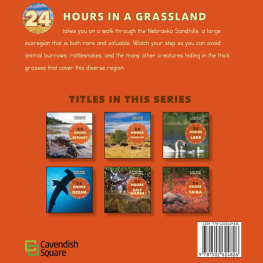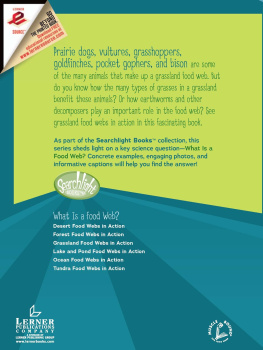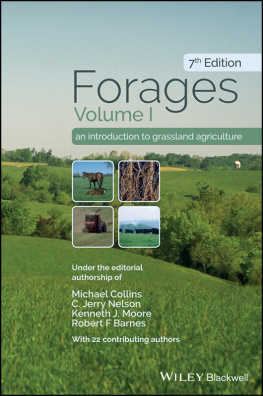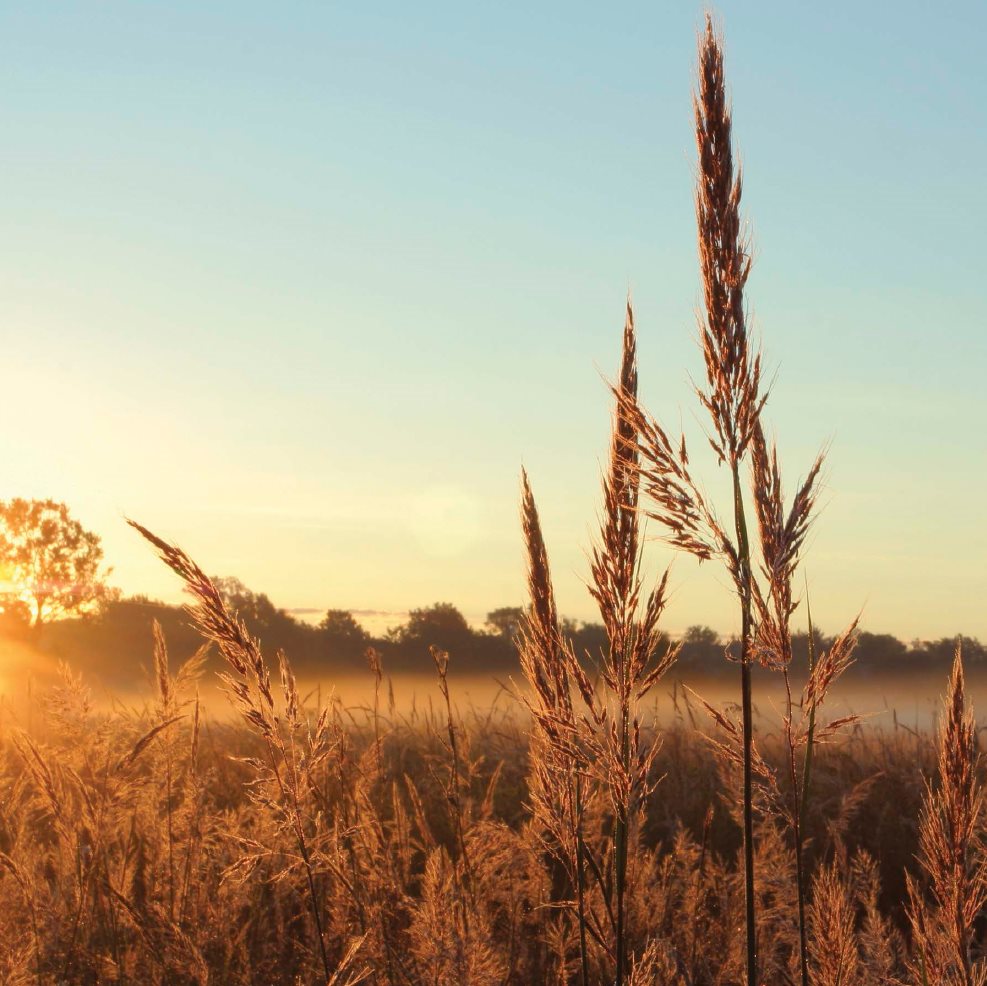Published in 2018 by Cavendish Square Publishing, LLC
243 5th Avenue, Suite 136, New York, NY 10016
Copyright 2018 by Cavendish Square Publishing, LLC
First Edition
No part of this publication may be reproduced, stored in a retrieval system, or transmitted in any form or by any meanselectronic, mechanical, photocopying, recording, or otherwisewithout the prior permission of the copyright owner. Request for permission should be addressed to Permissions, Cavendish Square Publishing, 243 5th Avenue, Suite 136, New York, NY 10016.
Tel (877) 980-4450; fax (877) 980-4454.
Website: cavendishsq.com
This publication represents the opinions and views of the author based on his or her personal experience, knowledge, and research. The information in this book serves as a general guide only. The author and publisher have used their best efforts in preparing this book and disclaim liability rising directly or indirectly from the use and application of this book.
CPSIA Compliance Information: Batch #CS17CSQ
All websites were available and accurate when this book was sent to press.
Library of Congress Cataloging-in-Publication Data
Names: Bjorklund, Ruth.
Title: 24 hours in a grassland / Ruth Bjorklund.
Other titles: Twenty four hours in a grassland
Description: New York : Cavendish Square Publishing, [2018] | Series: A day in an ecosystem | Includes index.
Identifiers: LCCN 2016057401 (print) | LCCN 2016058482 (ebook) | ISBN 9781502624826 (library bound) | ISBN 9781502624833 (E-book)
Subjects: LCSH: Grassland ecology--Nebraska--Sandhills. | Prairie ecology--Nebraska--Sandhills. | Natural history--Nebraska--Sandhills. | Sandhills (Neb.)
Classification: LCC QH104.5.M47 B56 2018 (print) | LCC QH104.5.M47 (ebook) | DDC 577.409782/7--dc23
LC record available at HYPERLINK https://lccn.loc.gov/2016057401 https://lccn.loc.gov/2016057401
Editorial Director: David McNamara
Editor: Fletcher Doyle
Copy Editor: Rebecca Rohan
Associate Art Director: Amy Greenan
Designer: Stephanie Flecha
Production Coordinator: Karol Szymczuk
Photo Research: J8 Media
Printed in the United States of America
AS sunlight glints across hills of rolling green grass, sparkling drops of dew begin evaporating. Distant puffs of golden fog float above the valleys. It is early morning, and the sky glows pale blue and bright pink. In every direction, the landscape goes on forever, green and unchanging. There is sand underfoot and not a tree in sight. It is so quiet, the only sound you hear is a soft ringing in your ears.
As the ringing in your ears quiets, you start hearing other sounds. Wild grasses are making a gentle swish as they stir in a light breeze. The clicking of grasshoppers grows louder. In the distance, a flock of ducks flaps their wings. No longer are you in a silent emptiness; the land around you is waking up. You are standing in the vast expanse of the Nebraska Sand Hills, one of the largest intact grasslands left in North America, and one of the rarest ecoregions in the world.
Grasslands are wide expanses of wildflowers, forbs (non-woody plants), grasses, and wetlands. They exist where there is not enough rainfall to sustain a forest of trees, but where there is enough rain to prevent the land from forming a desert. Grasslands are found on every continent in the world, except Antarctica. They are called by many names: pampas and llanos in South America; veldts and savannas in Africa; steppes in Eurasia; rangelands in Australia; and plains or prairies in North America. Grasslands can be tropical, such as the African savanna. Or, they can be temperate , such as the Great Plains. Temperate grasslands straddle the land between deserts and forests.

| Big bluestem tall grass, the tallest grass in the tallgrass prairie, glows in the sun. |
The Sand Hills grassland is a temperate grassland as well as the largest sand dune formation in the Western Hemisphere. Wait, you say, Sand dunes? I thought we were talking about grasslands, not beaches. Well, the Sand Hills grassland was once a beach and a sea floor. Eighty million years ago, an ancient sea covered the region. Toward the end of the last Ice Age, the seas retreated, leaving the Sand Hills a lush landscape of flowers, grasses, and pine trees. However, the land got drier and hotter, and the trees died off. And with the trees went the topsoil. Only sand remained. As winds swept across the open prairie, the sand was whipped up and deposited into great mounds, or dunes. The dunescape, as it is today, was formed five to eight thousand years ago. The sand dunes were not the end of the story. The rain still fell on the dunes, and underneath sat a huge underground lake, or aquifer . Grasses and flowers returned. Although the soil was sandy and a bit salty, with rain, the plants thrived.
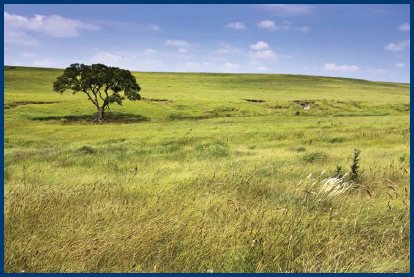
Grasslands may appear monotonous but they house numerous varieties of plants.
The Sand Hills grassland covers an area of about 23,600 square miles (61,100 square kilometers). The region extends about 100 miles (161 km) east to west and 200 miles (322 km) north to south in north-central Nebraska. The grassland makes up just a small portion of the North American Great Plains, but it has much more than its share of remarkable plants and animals. Really, you say, while staring at a horizon that appears to be just a stripe of green and a stripe of blue. It does not look like much. Well, hidden splendors await, so lets start trekking.
Trumpet-shaped morning glories produce a fresh bloom every morning.
MORNINGS GLORY
When it comes to morning glories, bees must pollinate fast. Morning glory flowers grow on a rambling perennial vine. Their delicate lavender flowers only open at dawn. As the day heats up, the flowers wilt. Each flower has only one day in the sun; once it blooms, it never does again.
IT is a day in late spring, the sun is out, and it promises to be warm, maybe hot. Even though the Sand Hills are a temperate grassland, temperatures can be extreme. Summer highs can soar above 100 degrees Fahrenheit (38 degrees Celsius) and winter lows can drop to a frigid 30 degrees below zero Fahrenheit (34C). Today, there is a nice breeze, so it is a perfect day for a long walk.

